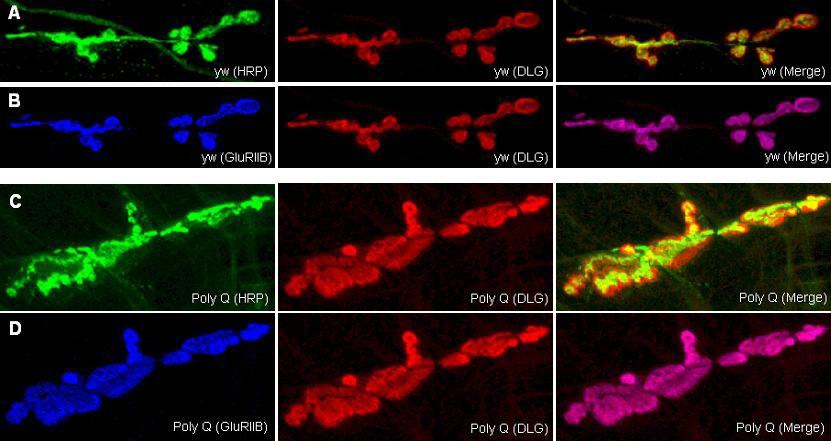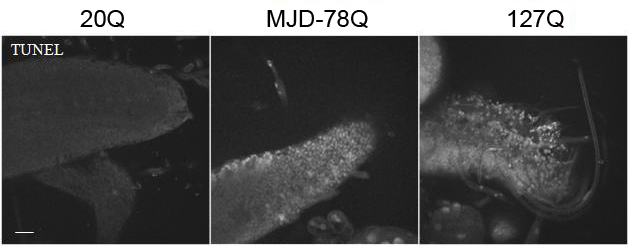The Laboratory of Dr. Shermali Gunawardena
Research![]()
The Laboratory of Dr. Shermali Gunawardena |
Research |
A: Axonal transport pathways in the initiation of Neurodegeneration The emerging hypothesis from our previous work on two human neurodegenerative diseases (AD, HD/polyQ) is that the transport pathway can be compromised. Mutations in motor proteins have also recently shown to cause degenerative disease. Although the mechanistic steps of how transport problems arise are still unknown, potential problems during any step of the transport process: loading of vesicles on to motors, regulation of vesicle movement during MT-based transport and unloading of vesicles off motors and off the MT track when they are brought to their site of action could manifest as a global problem in transport, i.e., as an axonal block. Can these blocks lead to disease pathology such as amyloid-like structures, cytoplasmic aggregates/inclusions or Lewy bodies? |
|
 Movie 2: Movement of APP-YFP is disrupted by expression of pathogenic polyQ proteins within a single larval axon. |
 Figure 1. Morphology of pre and post synaptic membrane of yw and Poly Q overexpressed mutant larvae of neuromuscular junction at muscle 6/7. |
 Figure 2. Neuronal cell death is seen within larval brains expressing expanded amount of polyQ repeats. |
B: Microtubule-based transport pathway as a therapeutic target. Our research is also focused on elucidating if MT-based transport pathways can be utilized to direct specific therapeutic aids to axonal blocks. In this regard, we are utilizing nanoparticles (NPs) since NPs can be conjugated with potential compounds or even siRNA. However, for NPs to be useful we first need to characterize NPs in the context of axonal transport. To explore this, we are using our robust in vivo movement assay and a compound that specifically suppressors blockages induced by pathogenic polyQ proteins. This work is been done in collaboration with Dr Jim Bergey and his team at the Institute of Lasers, Photonics and Biophotonics. |